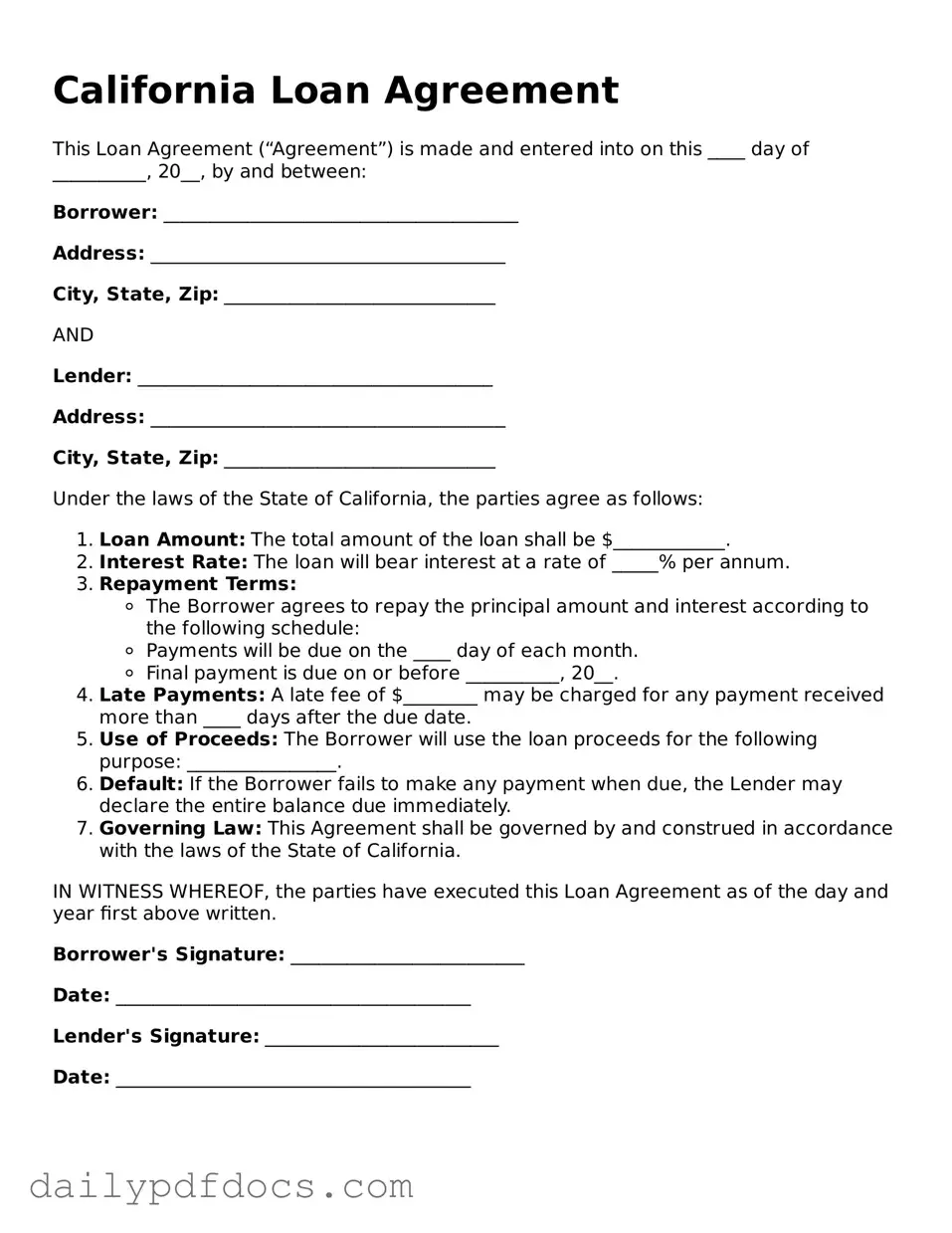What is a California Loan Agreement form?
A California Loan Agreement form is a legal document that outlines the terms and conditions under which a loan is provided between a lender and a borrower. It details the amount of the loan, the interest rate, repayment schedule, and any collateral involved. This form helps protect both parties by clearly defining their obligations and rights.
Who can use the California Loan Agreement form?
Any individual or entity looking to lend or borrow money in California can use this form. It is commonly utilized by private lenders, friends, family members, or businesses. However, it is essential that both parties understand the terms and are in agreement before signing.
What are the key components of a California Loan Agreement?
The key components typically include the loan amount, interest rate, repayment terms, due dates, and any fees associated with the loan. Additionally, the agreement may specify the consequences of default and the rights of both parties regarding the loan.
Is it necessary to have the Loan Agreement notarized?
While it is not legally required to notarize a California Loan Agreement, doing so can add an extra layer of protection. A notary public verifies the identities of the signatories, which can help prevent disputes over whether the agreement was signed voluntarily.
What happens if the borrower defaults on the loan?
If the borrower defaults, the lender has the right to take specific actions as outlined in the agreement. This may include charging late fees, accelerating the loan (demanding full repayment), or pursuing legal action to recover the owed amount. The exact consequences will depend on the terms set in the agreement.
Can the terms of the Loan Agreement be modified after it is signed?
Yes, the terms can be modified, but both parties must agree to any changes. It is advisable to document these modifications in writing and have both parties sign the revised agreement to avoid future misunderstandings.
What should I do if I have questions about the Loan Agreement?
If you have questions or concerns about a Loan Agreement, it is wise to consult with a legal professional. They can provide guidance tailored to your specific situation and help ensure that your interests are protected.
Are there any legal requirements for interest rates in California?
Yes, California law imposes limits on the interest rates that can be charged, particularly for consumer loans. It is crucial to be aware of these regulations to avoid potential legal issues. Consulting with a legal expert can help ensure compliance with state laws.
